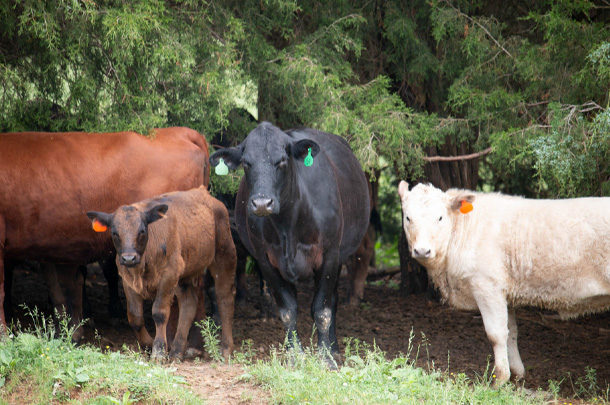Heat costs the cattle industry billions of dollars annually. This loss comes from reductions in feed conversion, growth, milk production and reproduction. Extensive research has been done to mitigate the impacts of heat stress in the cattle industry. In 2019, a review titled “The Impact of Heat Load on Cattle” published by Lees and colleagues reviewed the impacts of heat stress in cattle. Let’s look at five of the take-home messages from that publication:
1. Feed intake causes heat production in cattle due to microbial fermentation of the rumen. This accounts for 3% to 8% of heat production by cattle. During hot weather, cattle compensate for ruminant heat production by consuming smaller meals more frequently and by shifting feed intake to cooler parts of the day. Dry matter intake (DMI) tends to decline when temperatures reach 77°F to 80°F.
2. An increase in core body temperature causes a redistribution of blood flow from internal organs to the extremities. This means there’s less blood going to the digestive tract. How much less? Research shows us that heat stress causes a 32% decrease in blood flow to the rumen. This is only compounded by an increase of 7% to 25% in maintenance energy required during times of heat stress, due to the additional energy needed to dissipate accumulated heat from within the body.
3. Recovery from a single heat stress insult on male fertility can take up to eight weeks. The impact of a single heat insult that inhibits a bull’s ability to properly cool the testicles will impact an entire cycle of spermatogenesis (eight-week process). There have been no studies that have reported a positive relationship between heat stress and spermatogenesis.
4. Heat stress in cows/heifers can alter follicular development, oocyte quality, embryonic development, estrus and estrus behaviors, and can reduce uterine blood flow and more. That is a scary list! Heat stress the month prior to breeding can impact conception rate, and heat stress in the two weeks after breeding can also have negative impacts on overall fertility. Heat load has been associated with smaller conceptus size, which may influence maternal recognition of pregnancy. Heat stress is most likely to cause embryonic loss during the peri-implantation period, from day 21 to day 30 of gestation. Following day 30, the embryo tends to increase in thermotolerance.
5. In lactating cows, nutritional requirements for maintenance are 20% higher when temperatures go from 85°F to 95°F. This can result it difficulty maintaining body condition during periods of heat stress, especially since a decrease in DMI is common. Multiple research reports have stated there is a negative relationship between heat stress and milk protein and fat compositions. Coupled with decreased milk yield and quality, prolonged heat stress can reduce calf gains, with energy that would have been used for growth shifted to maintain homeostasis.
This short list of issues heat can have on performance, health and overall well-being of cattle makes it clear that high temperatures are no friend to the cattle industry. And, while it’s hard to believe in the dead of winter when producers are fighting to keep things thawed out and alive, cattle may very well be more equipped to deal with cold than heat, from a performance standpoint.











